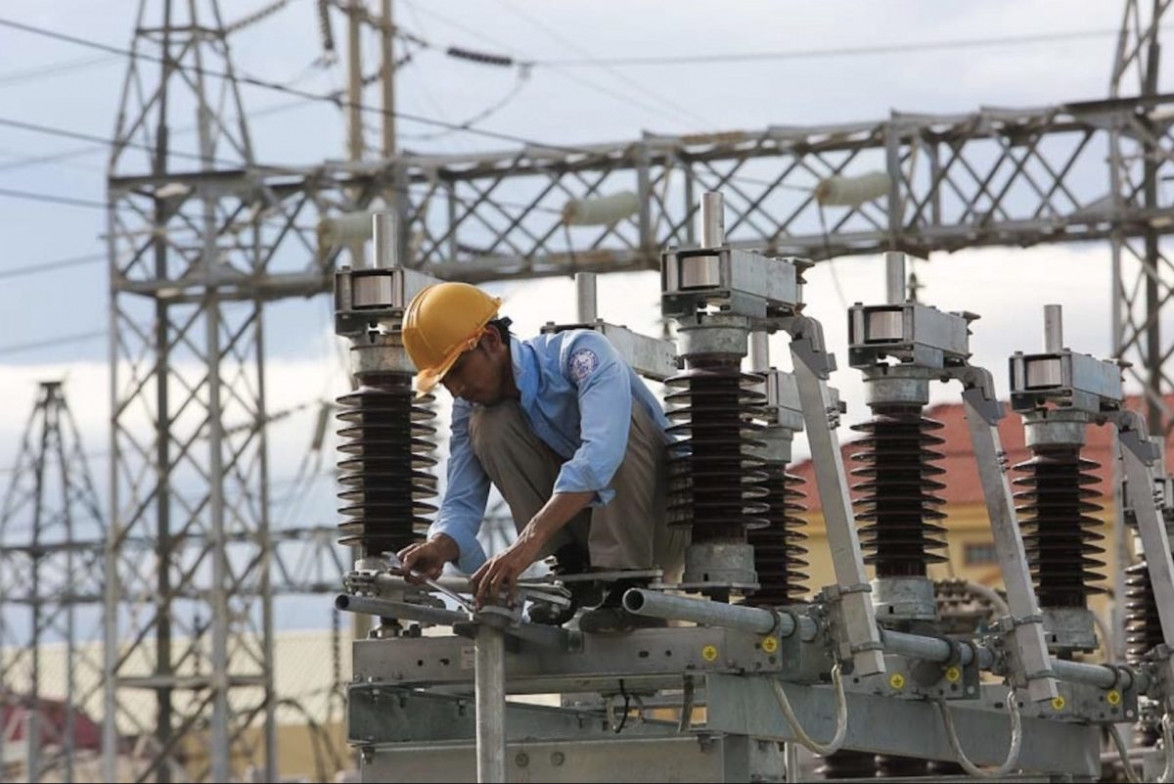
Cambodia’s Electric Shortage: Its Impacts on Economy and Small Businesses

Written by: Kong Sreynou, a 3rd-year student majoring in International Studies at Institute of Foreign Languages, RUPP.
Edited by: Heng Kimkong, a Visiting Senior Research Fellow at Cambodia Development Center and a Ph.D. Candidate in Education at The University of Queensland, Australia. 
Photo Credit: Asia Times
Cambodia has experienced steady economic growth over the last few decades, along with the boom of construction and investment. Within this context, the consumption of energy such as electricity has significantly increased. Although Cambodia has undergone rapid economic development, the infrastructure required for the energy sector is still limited to match the pace of development. With the increasing population and the expansion of key industries such as garment and tourism sectors, Cambodia’s electricity consumption increases. It was forecast that electricity consumption would grow at a rate of 9.4% annually. Meanwhile, Cambodia also encountered a shortage of electricity due to the drought in the dry season as well as the growing number of demands in electric usage. The shortage of electricity is harmful to public places, industries, or households. In 2019, the government had to reduce or cut off the electricity during the day in order to meet the demands at night. Electric scarcity has impacts on the economy and small businesses in many ways.
First, electric inefficiency can cripple the small businesses in the country as small business owners are believed to endure the most from the electric shortage. Large parts of Cambodia have to suffer hours of electric outages, as the country’s supply of electricity could not meet the increasing demand. According to VOA Cambodia, Phnom Penh has been crippled by power outages up to 6 hours per day in some areas, and it is struggling to meet the high demand of the small business owners. Some small businesses such as Salons require ongoing electricity to run their business. For example, Sokunthea, a salon owner in Phnom Penh, has experienced an ongoing electricity shortage, saying that, without electricity, she can’t blow-dry the hair of her guests after washing it. She further added that her customers would not be able to enter her shop since the weather is scorching hot. Without fans, her customers will get sweaty, and the make-up will slide off.
The electric outage undeniably offers difficulties for small business owners to pursue their small business since their income will be dropped. Plus, the price of Cambodia’s electricity is also regarded as among the most expensive in the region, according to the Open Development Cambodia (ODC). Thus, while they cannot run their business smoothly to generate income, they have to pay their electricity fees at a high price. There are also growing numbers of new constructions, such as new apartment buildings, stores, and hotels, which do need electricity, adding burden to the already struggling sector. No doubt, without proper electric generation, small businesses will suffer, and many new buildings will be slowly constructed.
Second, the economic impact of regular power cuts could be huge. Big investments or private companies in or around the Phnom Penh city, especially within the industry and manufacturing sector such as garment factories, play vital roles in helping the Cambodian economy, yet they depend heavily on electricity to run their businesses. Since there is a shortage of supply of electricity, the firms from private companies and big investments will lose their interest in investing in our country. This is because they will have to buy expensive generators, which adds to their expenses. As stated by Cheat Khemera, Senior Officer at Garment Manufacturers Association of Cambodia (GMAC), most garment factories are connected with state-run electricity supply, and therefore there would be great impacts if there is not enough electricity.
With the growing demands for the nation's electrification priorities, Cambodia has invested heavily in hydropower development with 60 possible sites, and an estimated supply of 10,000 MW, of which 50% is on the mainstream Mekong, 40% on its tributaries, and 10% in the southwest outside the Mekong basin. In addition, coal electric generation is also an attractive complement that can offset hydropower seasonality. According to the Ministry of Mines and Energy (MME) annual report in 2020, there are two coal-fired power plants in Cambodia. One of which is located in Tamar Sor commune, Botum Sakor district, Koh Kong province, and another one is situated in Trapaing Prasat district, Oddar Meanchey province. These two power sources, hydropower dam, and coal have promised massive gains in electricity generation capacity. Additionally, solar power has emerged as an energy source with considerable potential for Cambodia. To date, Cambodia’s existing operational solar power stations include a 10-megawatt (MW) and a 5 MW solar farms in Bavet city, Svay Rieng province, an 80 MW solar station in Kampong Speu province, a 60 MW solar station in Kampong Chhnang province, and a 60 MW solar station in Battambang province’s Thmar Kol district.
So far, the Royal Government of Cambodia has done its best by introducing policies and initiatives to address the inadequate electricity supply. It has laid out a few key policies on energy development. First, the Power Sector Strategy 1999-2016 was introduced to ensure an adequate, reliable and secure electricity supply throughout the country at reasonable and affordable prices to facilitate investment in Cambodia and to drive economic development. This strategy has encouraged the exploration of environmentally friendly ways and socially acceptable energy resources to minimize environmental effects resulting from energy supply and use. Second, the Renewable Electricity Action Plan (REAP) 2002-2012 was implemented to offer cost-effective and reliable electricity through renewable energy technologies in rural areas. Third, the government introduced the Renewable Energy Development Program which aims to promote the production of power supply from various resources such as hydropower, wind and solar energy, biomass, biogas, biofuel, solid wastes and geothermal energy.
In short, the electricity shortage can threaten Cambodia’s economic growth. Small businesses will suffer the most from the outage of electricity which serves as a major barrier for them to run their business. Thinking of Cambodia's economy, key investors and private companies will lose their interest in investing in the country due to the scarcity of the power supply and the high price of electricity. Therefore, to address these issues, the government should consider using more solar energy to generate electricity. Solar energy could be used to provide additional energy capacity during the dry season rather than constructing dams that can create long-lasting environmental consequences affecting the health of the Mekong river and lives depending on it. The investment in solar energy to produce electricity should therefore be considered by the government because it offers a more sustainable and affordable source of energy.




